Preparations for space shuttle Columbia’s first mission made significant progress in November 1980, and managers remained optimistic that the initial flight could take place by March or April of 1981. Significant milestones accomplished included the stacking of the vehicle’s major components at NASA’s Kennedy Space Center (KSC) in Florida in preparation for rollout to the launch pad before the end of the year. The prime crew for STS-1, John W. Young and Robert L. Crippen, and their backups Joe H. Engle and Richard H. Truly, participated in integrated tests of the assembled vehicle while strapped into their seats in Columbia’s cockpit. NASA’s Johnson Space Center (JSC) in Houston inaugurated a new underwater facility for to train space shuttle astronauts for spacewalks.
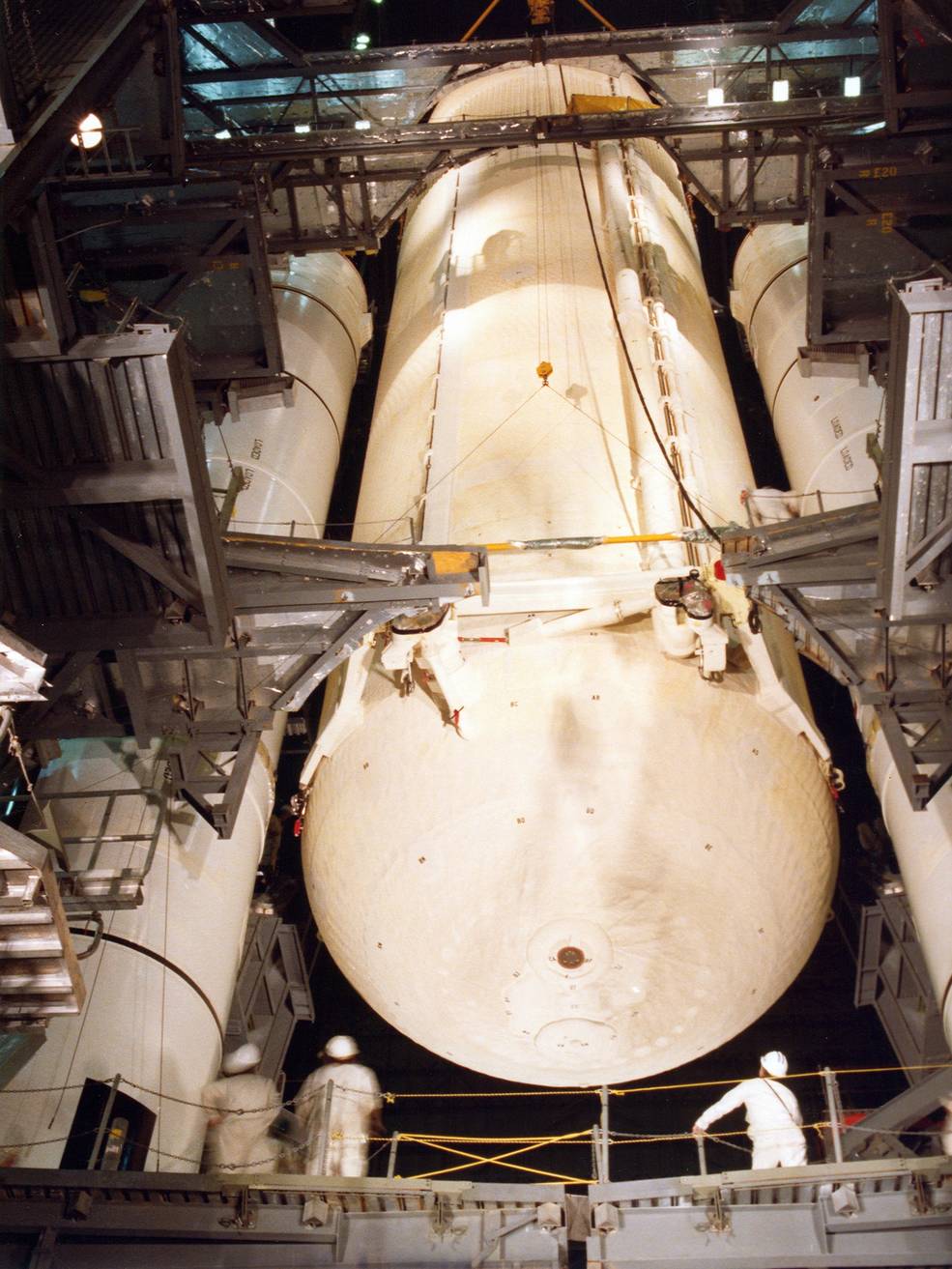
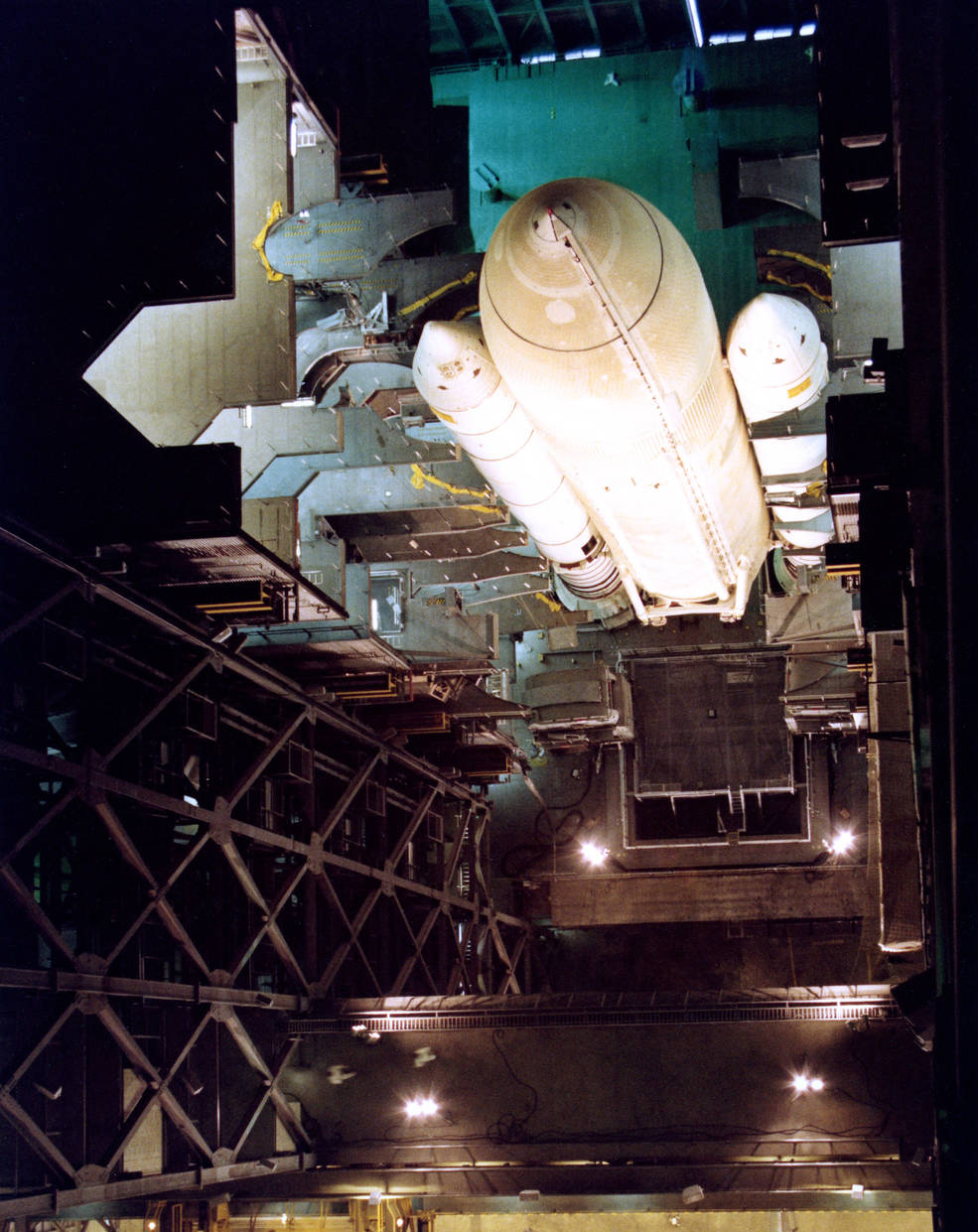
Left: Workers in the Vehicle Assembly Building at NASA’s Kennedy Space Center lower the External Tank (ET) before mating it with the two Solid Rocket Boosters (SRBs) on the Mobile Launch Platform (MLP). Right: The mated ET/SRB stack on the MLP await the addition of the space shuttle orbiter Columbia.
Inside KSC’s cavernous Vehicle Assembly Building (VAB), workers continued to assemble the large components of the space shuttle stack to prepare for Columbia’s first flight. They had stacked the twin Solid Rocket Boosters (SRBs) on the Mobile Launch Platform in January 1980. Beginning Nov. 2, they lowered the External Tank (ET) between the two SRBs and bolted them together, an operation that took about two days. In the nearby Orbiter Processing Facility (OPF), engineers reinstalled the three Space Shuttle Main Engines (SSMEs) onto Columbia and bonded the final 300 heat-resistant thermal protection system tiles to the orbiter’s exterior. Prime crew members Young and Crippen thanked workers in the OPF after the tile work was completed. Said Young, “We’ve come to pay tribute and give a word of thanks and a hardy well done to the people who worked on this spaceship. It’s a beautiful vehicle.”
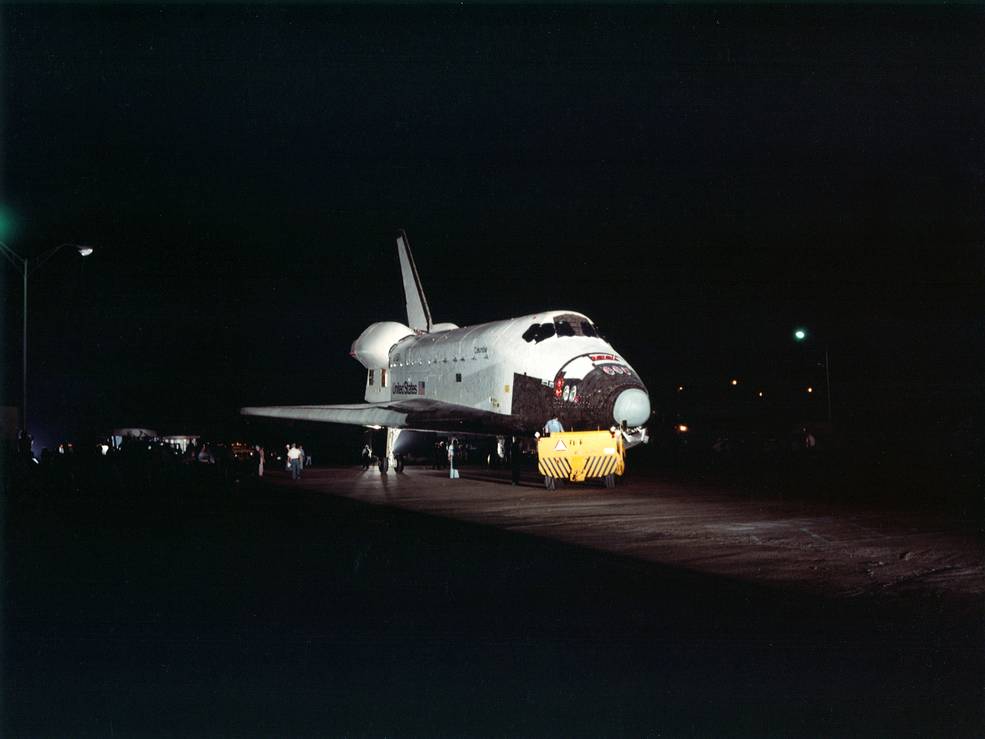
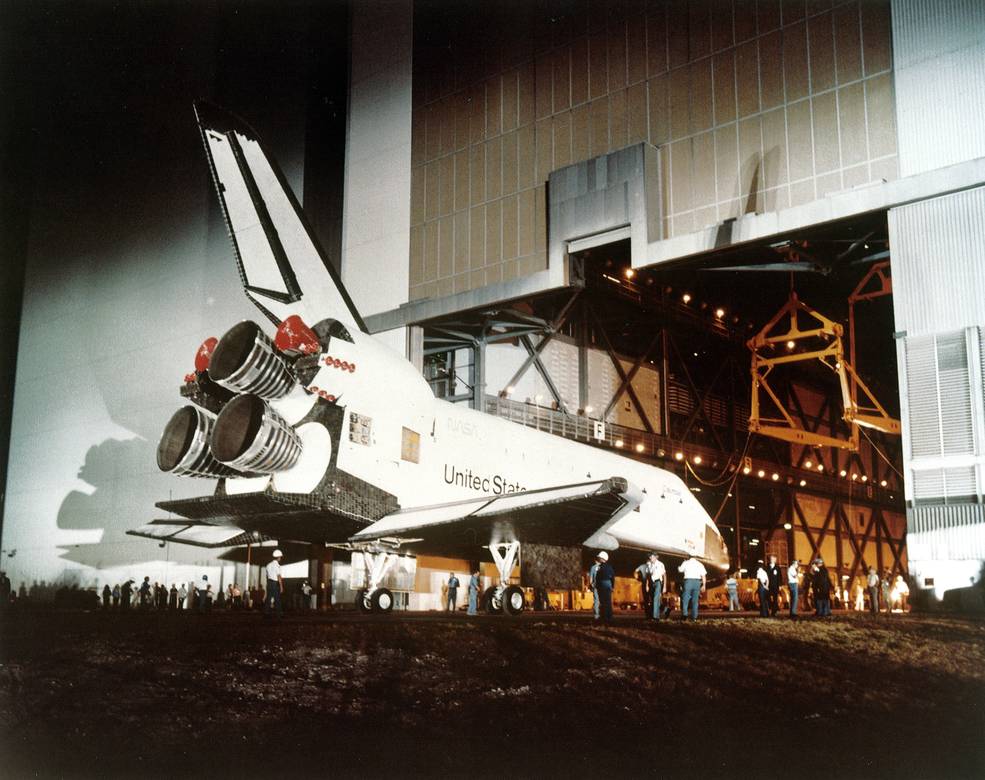
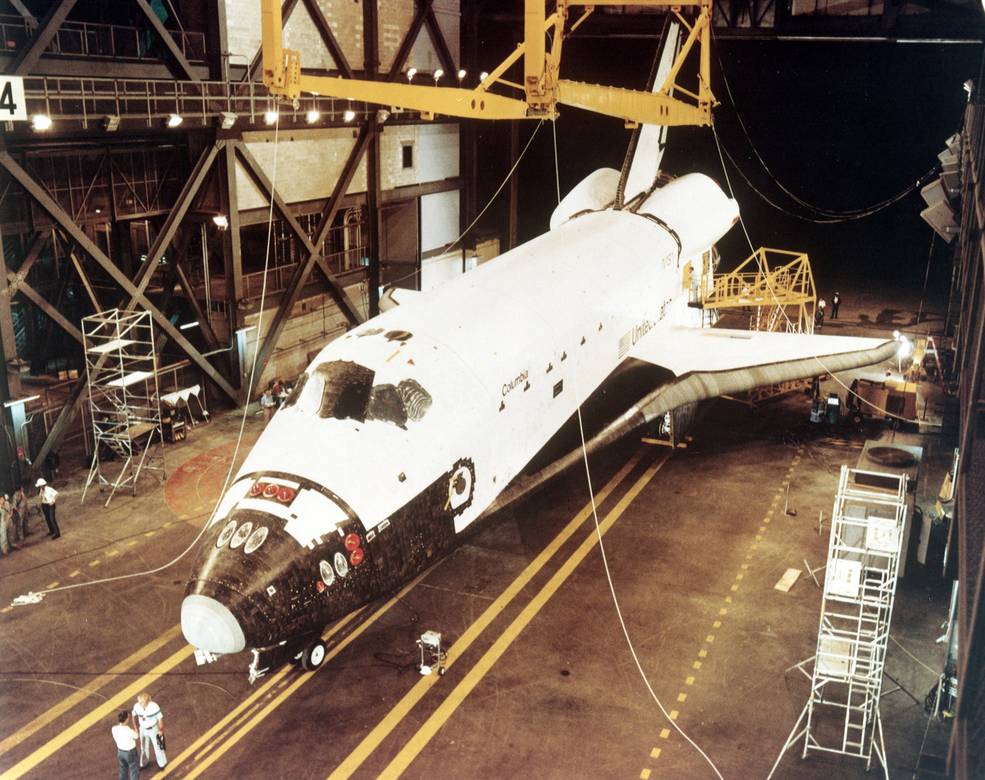
Left: Workers towing space shuttle Columbia from the Orbiter Processing Facility to the Vehicle Assembly Building (VAB) at NASA’s Kennedy Space Center in Florida. Middle: Space shuttle Columbia about to enter the VAB. Right: Space shuttle Columbia in the VAB transfer aisle.
After a stay of 20 months in the OPF, on the evening of Nov. 24, workers backed Columbia out of the OPF and rolled it over to the VAB, the transfer taking 30 minutes. A large crowd of KSC employees cheered the move. The next morning, workers grappled Columbia with a crane and lifted it from the transfer aisle, hoisting it more than 190 feet in the air to transfer it to High Bay 3 before lowering again to join it to the already assembled ET and SRBs. By early Nov. 26, workers completed all the connections to Columbia as engineers activated the orbiter to prepare the assembled vehicle for a series of tests. As part of the two-week shuttle interface test, on Dec. 4, engineers powered up the entire stack for the first time. Additional tests ensured that all systems operated as expected in the overall vehicle and ground systems. The prime and backup crews participated in ascent and entry simulations, strapped in their seats in the orbiter. Successful completion of the tests led to the next major milestone, the rollout of Columbia to Launch Pad 39A in late December.
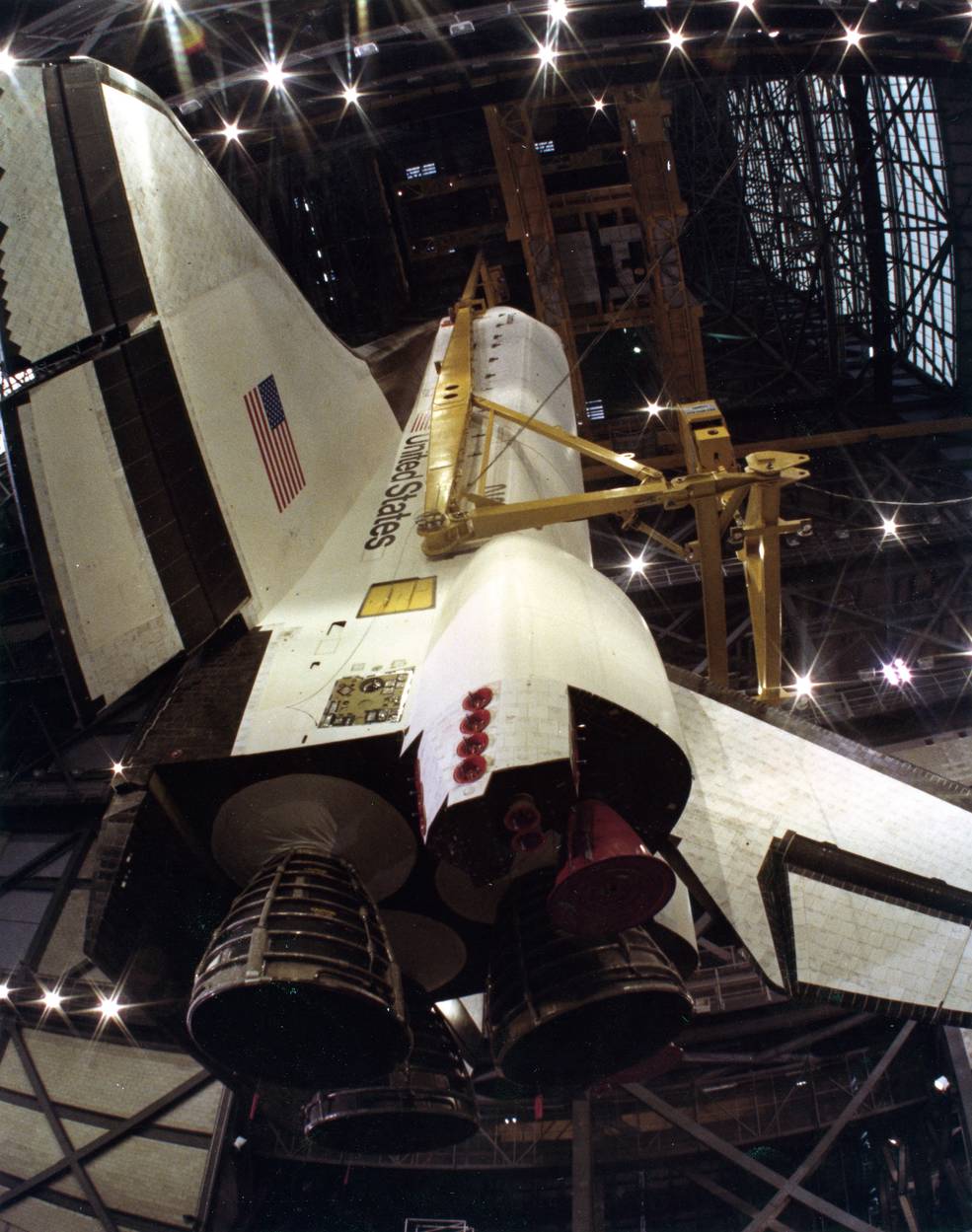
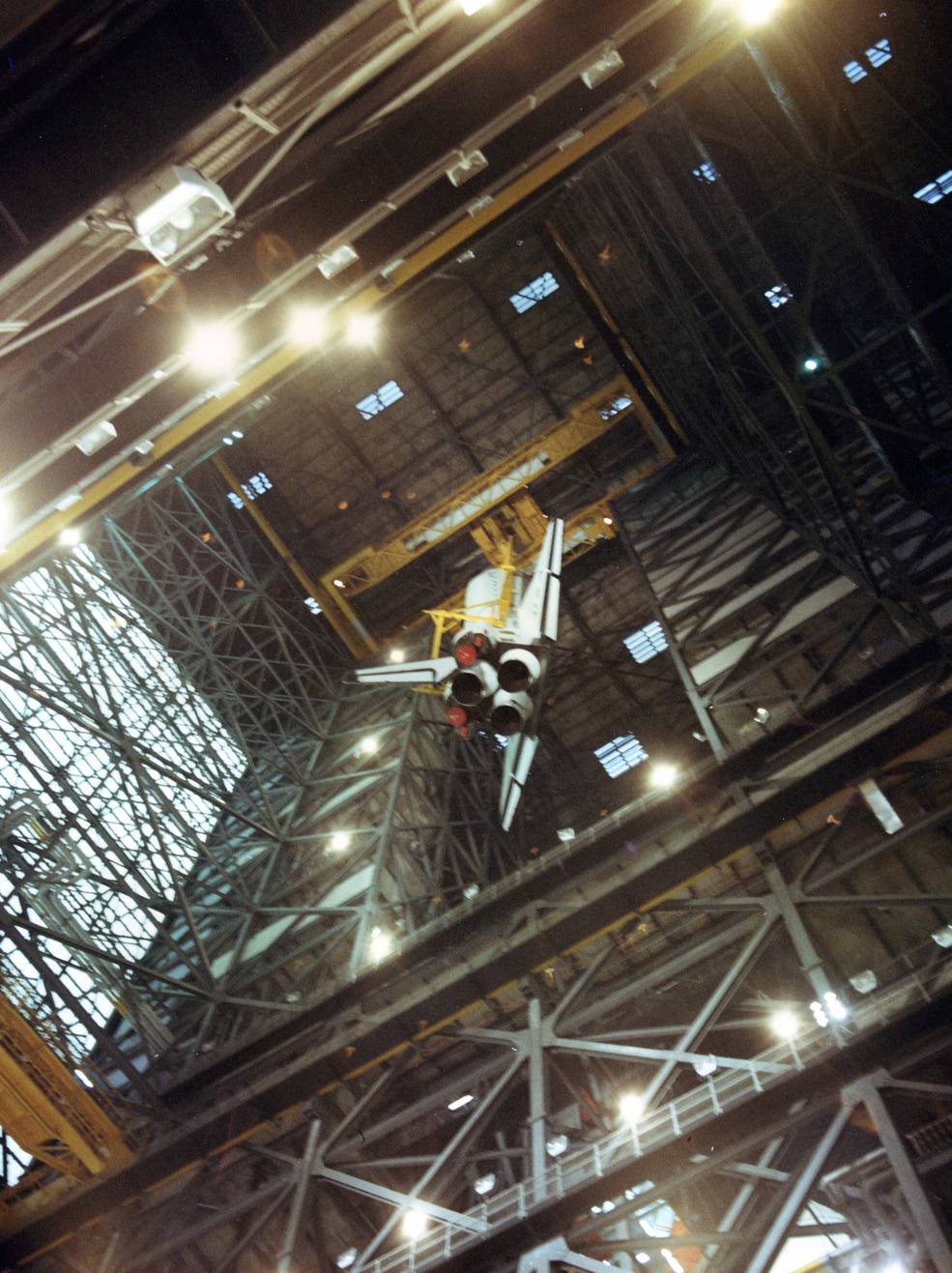
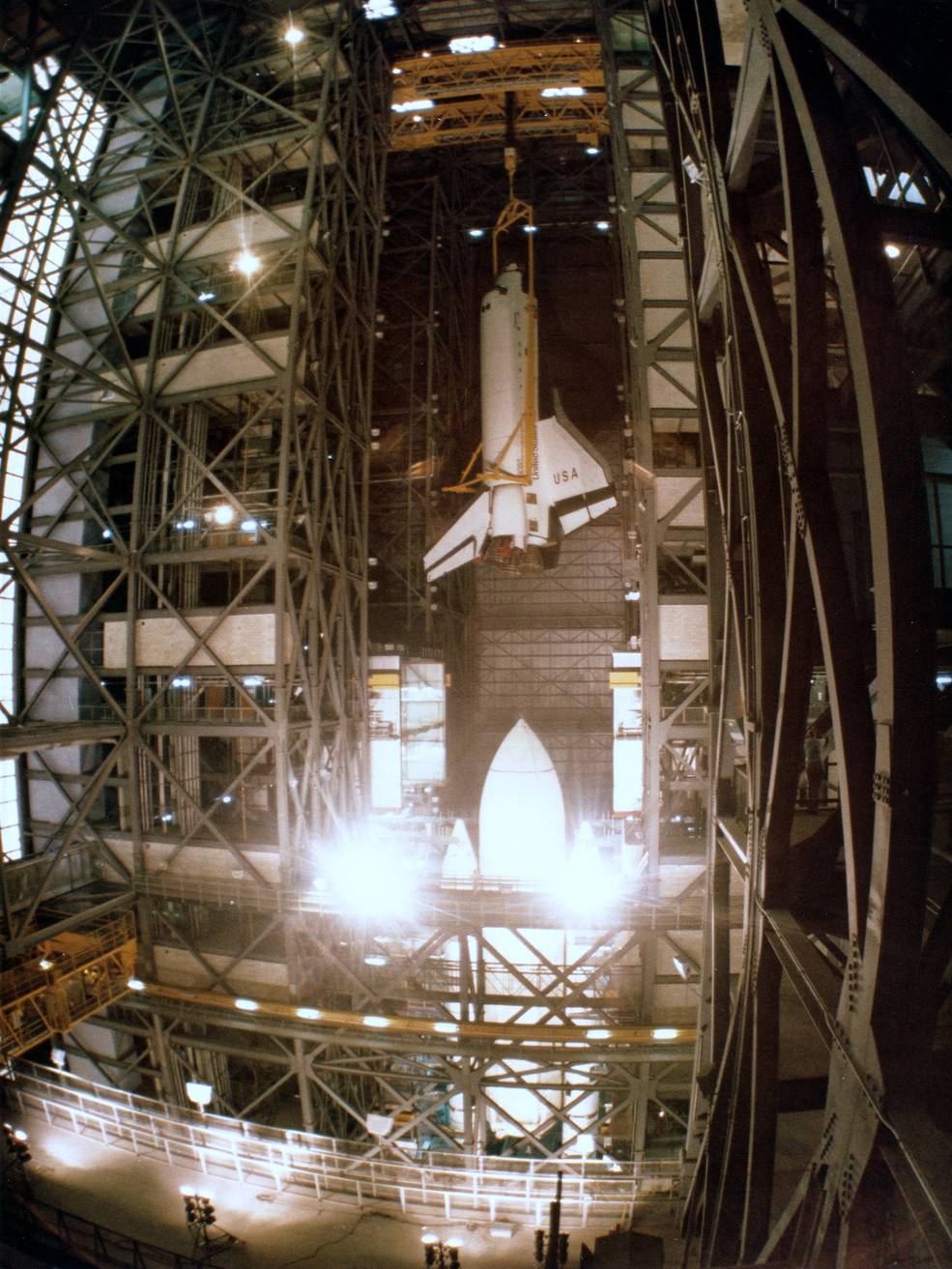
Left: Workers begin lifting space shuttle Columbia in the transfer aisle of the Vehicle Assembly Building (VAB) at NASA’s Kennedy Space Center. Middle: Workers in the VAB continue lifting Columbia from the transfer aisle into High Bay 3. Right: Workers lower Columbia in High Bay 3 to mate it with its External Tank and Solid Rocket Boosters.
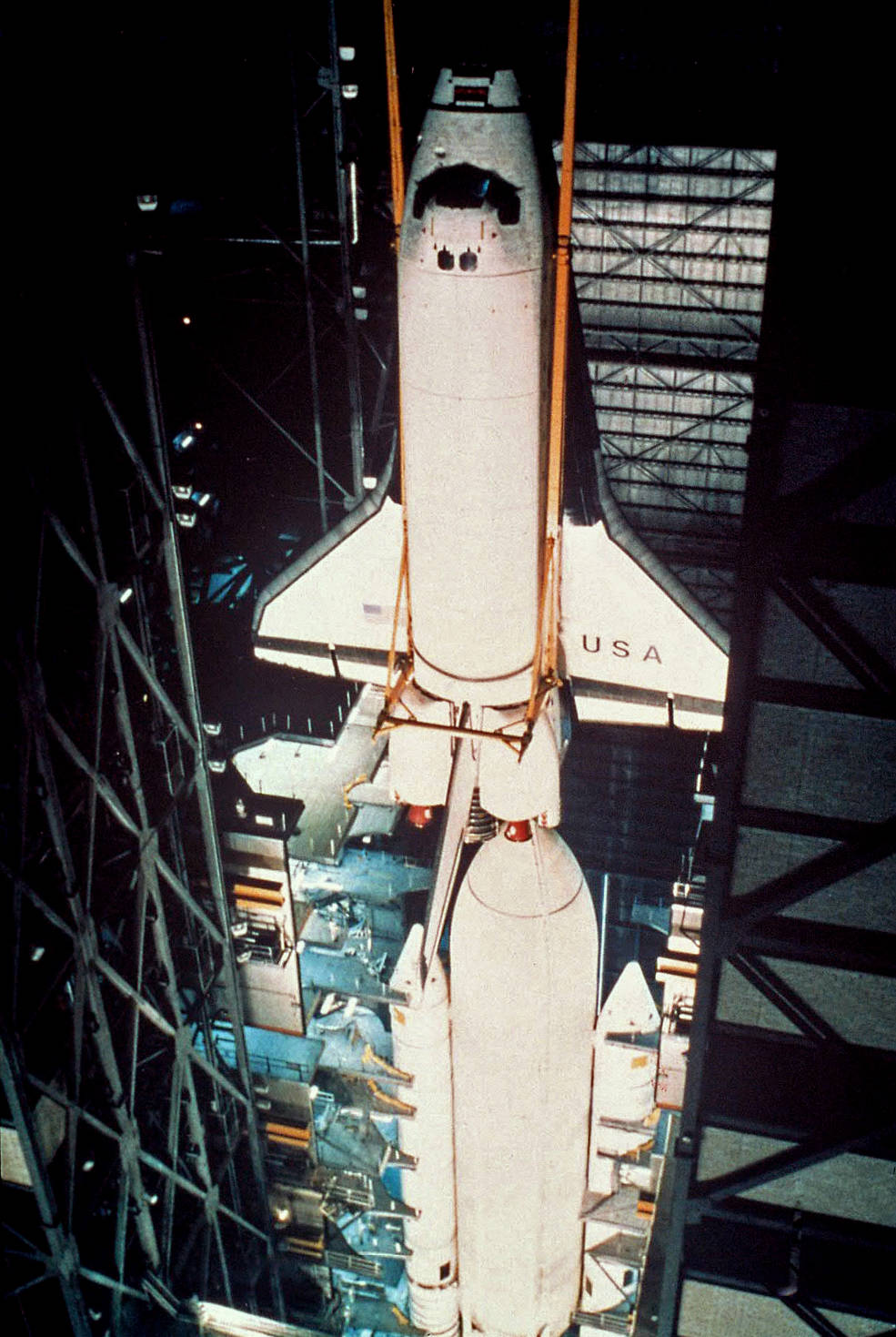
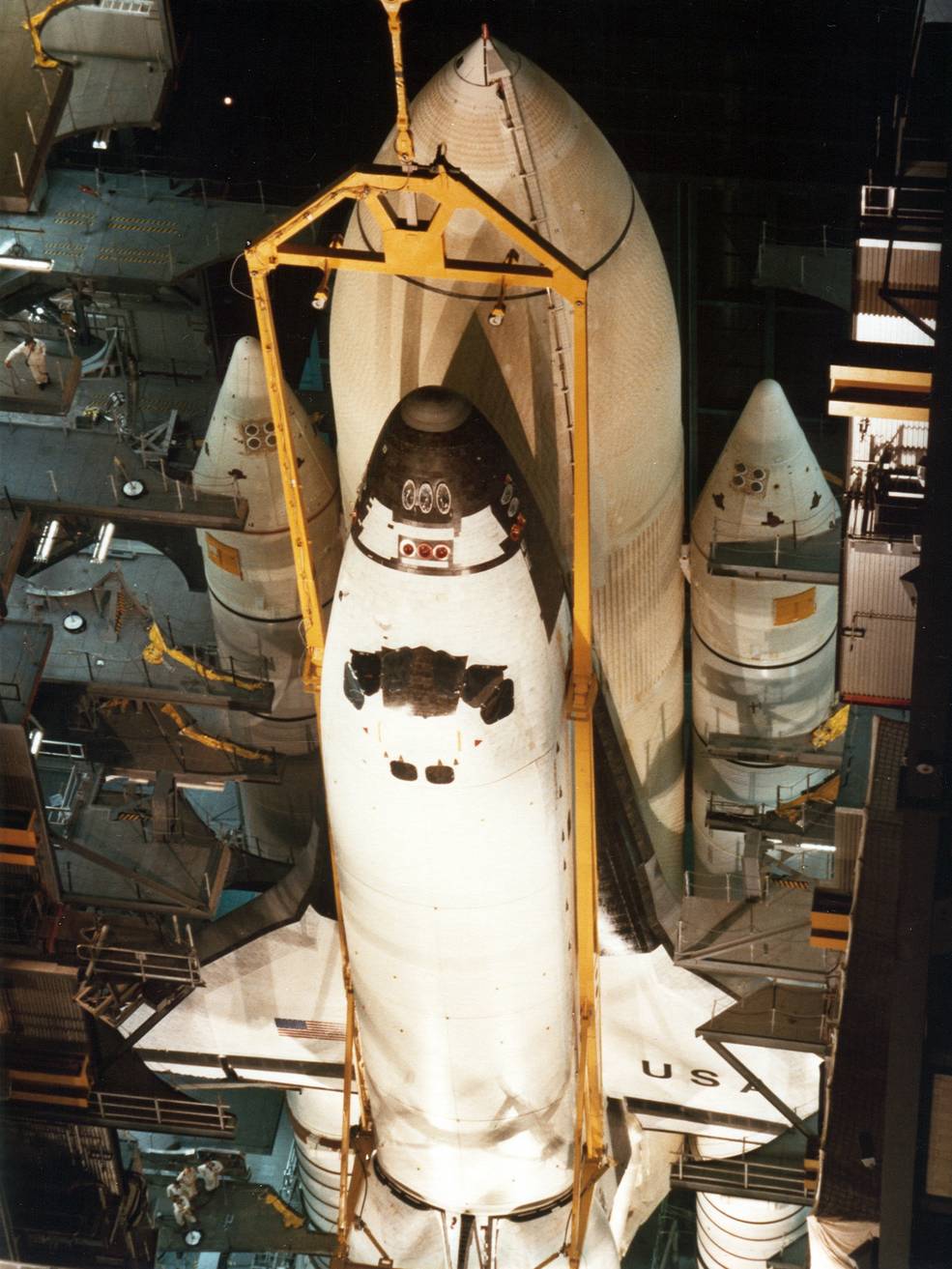
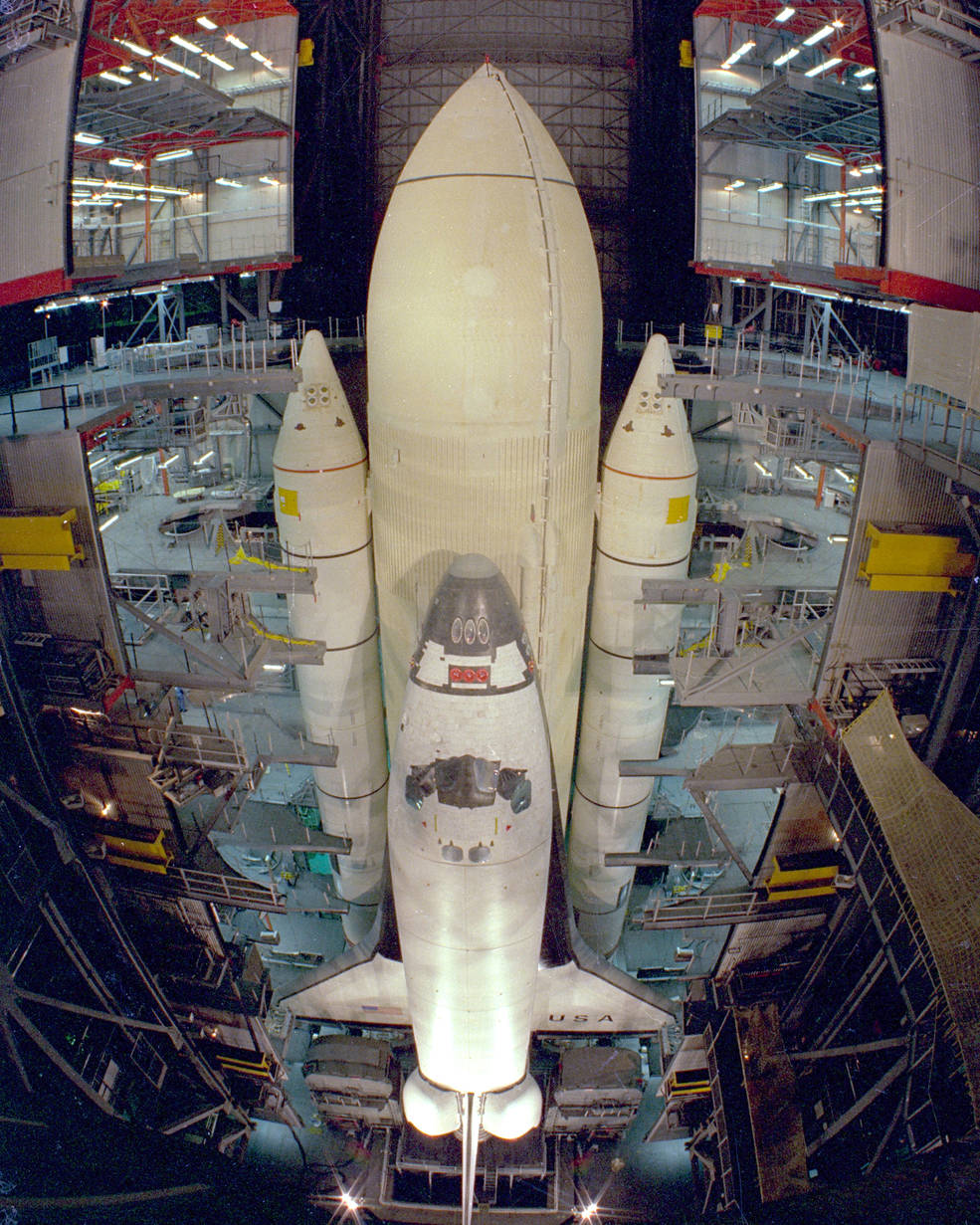
Left: In High Bay 3 of the Vehicle Assembly Building at NASA’s Kennedy Space Center, workers lower space shuttle Columbia to mate it with its External Tank (ET) and Solid Rocket Boosters (SRBs). Middle: With the crane still attached, workers finish mating Columbia to its ET/SRB stack. Right: Columbia mated with its ET and SRBs, standing on its Mobile Launch Platform.
To help space shuttle astronauts train for extravehicular activities (EVAs), or spacewalks, JSC inaugurated the Weightless Environment Training Facility (WETF) on Nov. 21, 1980. The WETF, essentially a swimming pool 33 feet wide, 78 feet long, and 25 feet deep, replaced the smaller Water Immersion Facility used to train Gemini and Apollo astronauts. Neutral buoyancy simulations, used by astronauts since 1966, provides a more effective method of training for EVAs than the short periods of simulated weightlessness afforded by parabolic aircraft flights. The larger size of the WETF allowed astronauts, dressed in training versions of new spacesuits, to train using full-scale mockups of the space shuttle cargo bay. The Extravehicular Mobility Unit (EMU), the spacesuit developed for space shuttle missions, improved over previous suits with added flexibility and mobility, making it easier for astronauts to operate in weightlessness. The two-piece suit came in different sizes to better fit the larger range of astronauts selected for space shuttle missions.
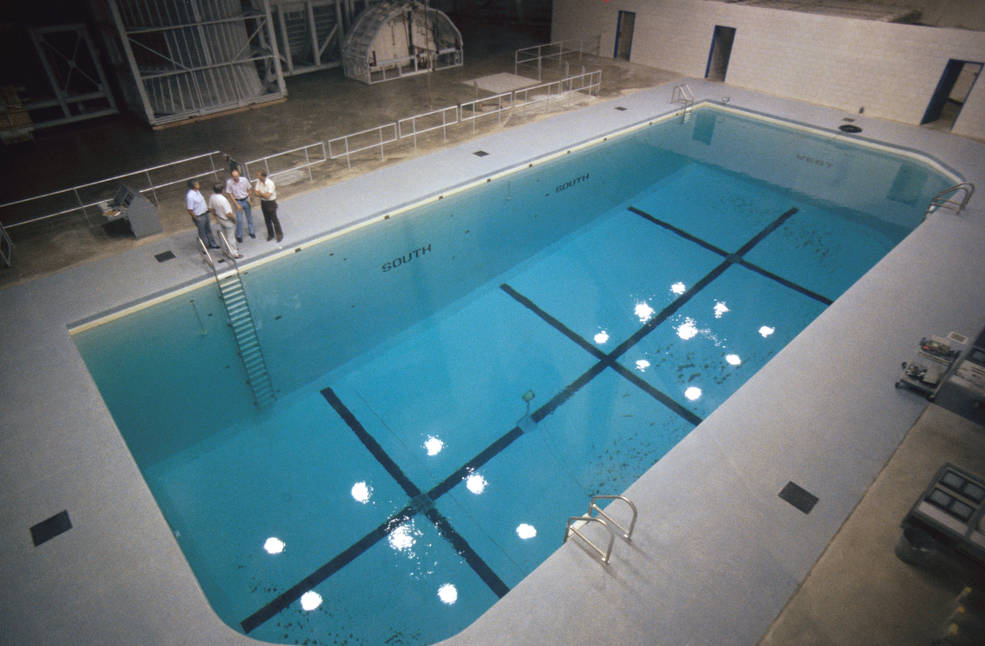
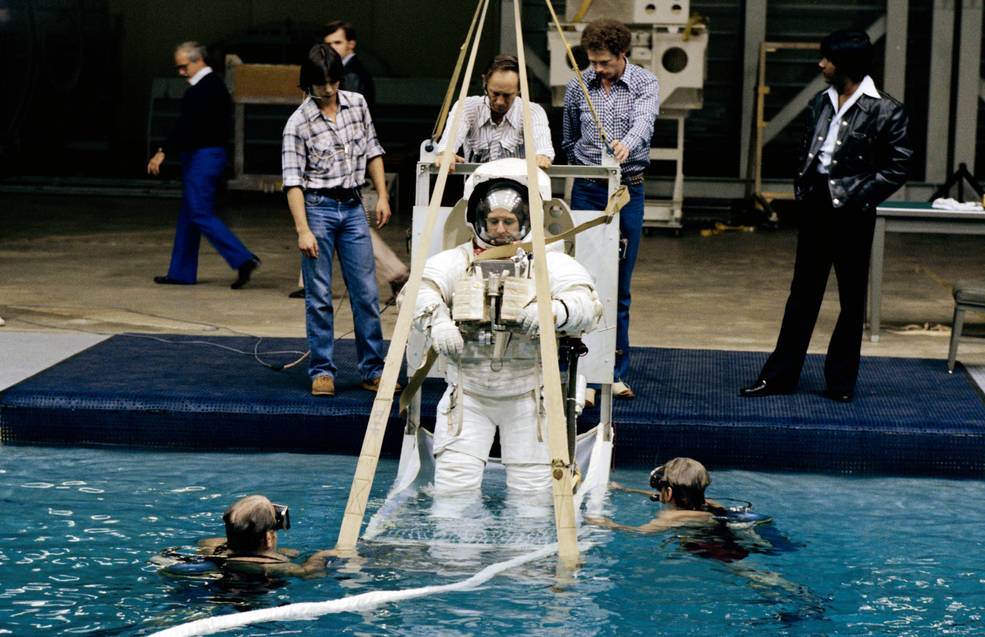
Left: The Weightless Environment Training Facility (WETF) at NASA’s Johnson Space Center in Houston, shortly before becoming operational. Right: Engineers lower STS-1 backup astronaut Richard L. Truly into the WETF for a spacewalk training session.
To be continued…
Significant world events in November 1980:
November 4 – Sadaharu Oh, all-time pro-baseball home run record holder with 868, retires
November 4 – Republican candidate Ronald W. Reagan is elected President of the United States
November 12 – Voyager 1 passes within 78,000 miles of Saturn
November 17 – John Lennon releases “Double Fantasy” album in the United Kingdom
November 21 – “Who Done It?” episode of the series Dallas airs on CBS-TV, revealing the identity of J.R. Ewing’s shooter
November 25 – Sugar Ray Leonard regains World Boxing Council welterweight boxing crown


























